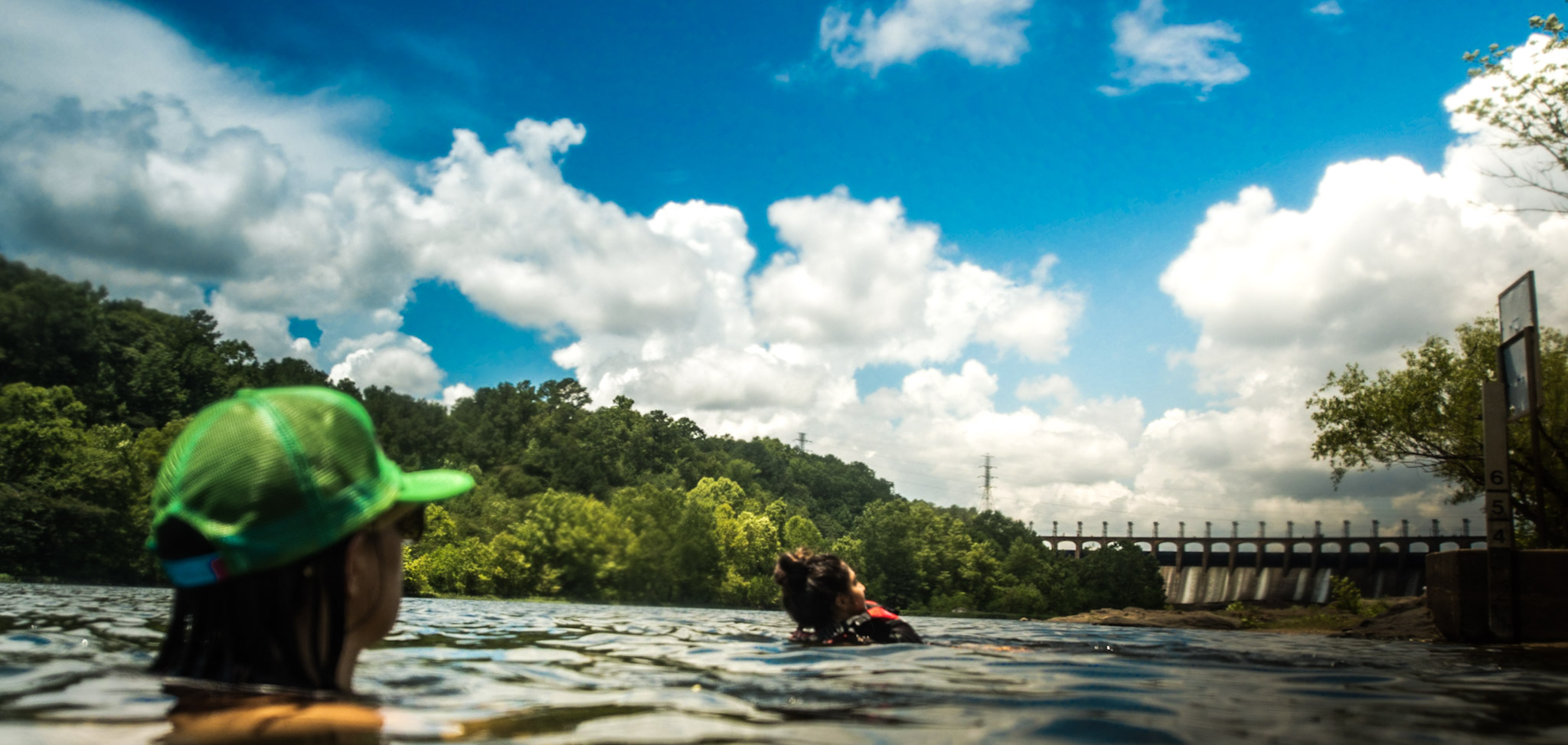We are in our fifth summer of Swim Guide, which is a recreational bacteria monitoring program along popular swimming holes on the Coosa. Since we started, we have collected 1,465 water quality samples, issued 147 high E. coli alerts and reached over 1,000,000 river lovers through Facebook, Instagram and our weekly Text Message alert system.
When we think of swimming our minds jump to kicking & splashing but that definition doesn’t even skim the surface of who could be at risk for contracting a recreational water illness.
There’s a risk.
if you’re submerged in the water or you are wading knee deep.
Basically, if you come in contact with the water at any point there is a risk. Bacteria doesn’t discriminate on the activity that you are doing. It just wants a place to live.
And usually that doesn’t end well for the host…
Since we don’t test on EVERY slough, creek or stream on the Coosa…
- The first step to a safe day on the water is to educate yourself, clean off after a dip and cover up any open cuts or sores.
- The second is to check Swim Guide to see if we do test near where you’ll be dipping, paddling or casting a line.
Here are 5 groups that could benefit from our weekly Swim Guide results…
1. Paddlers

We have all been in situations that called for more canoe dragging than paddling. Even if you aren’t planning on getting in the water you never know what could happen once you have launched. E. coli is the indicator bacteria for other harmful pathogens that could be present in the water that have the potential to infect open wounds. It’s always a good idea to clean and wrap any open sores before a day on the water (regardless of the bacteria counts).
2. Fishermen

How many times have you cut your hand on your own hook? It’s pretty difficult to stay completely dry after a day of fishing. By checking Swim Guide, you can minimize your risk of infected cuts & scrapes (you can also find other useful information for a successful day on the water)!
3. Boaters

When you drop an anchor in the water you gotta pull it up at some point! If the water is contaminated the anchor can pull up those pathogens with it, and they can end up your hands…and then on your hamburger. Be sure to wash your hands after any contact with the water!
4. Hikers

It’s the south. And it’s hot.
After a long hike, there might be a really enticing stream that is literally yelling at you to take your shoes off and soak your blistered and tired feet. From our years of experience, clean water can look a lot like dirty water. Even if you are just going in for a dip, especially if you have blisters from the hike, make sure to clean them thoroughly with rubbing alcohol after you soak!
5. Swimmers

Text “SwimGuide” to 844-83 to get water quality updates sent directly to your phone!
Well..DUH right?
You would think, but of the 500,000 folks that live in the Coosa Valley only 2,000 are signed up for our text message alert system!
Sickness can strike even at your favorite swimming hole. Make the smart decision and check Swim Guide before putting yourself (and your family) at risk. Every Friday around noon we have updated water quality results for you right here. Don’t take advantage of this free and useful resource!




